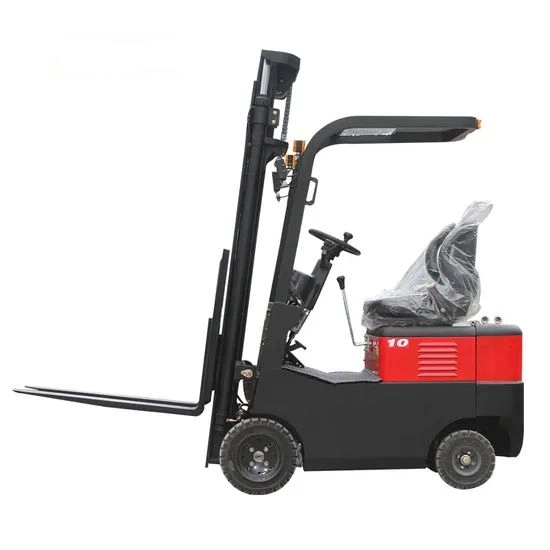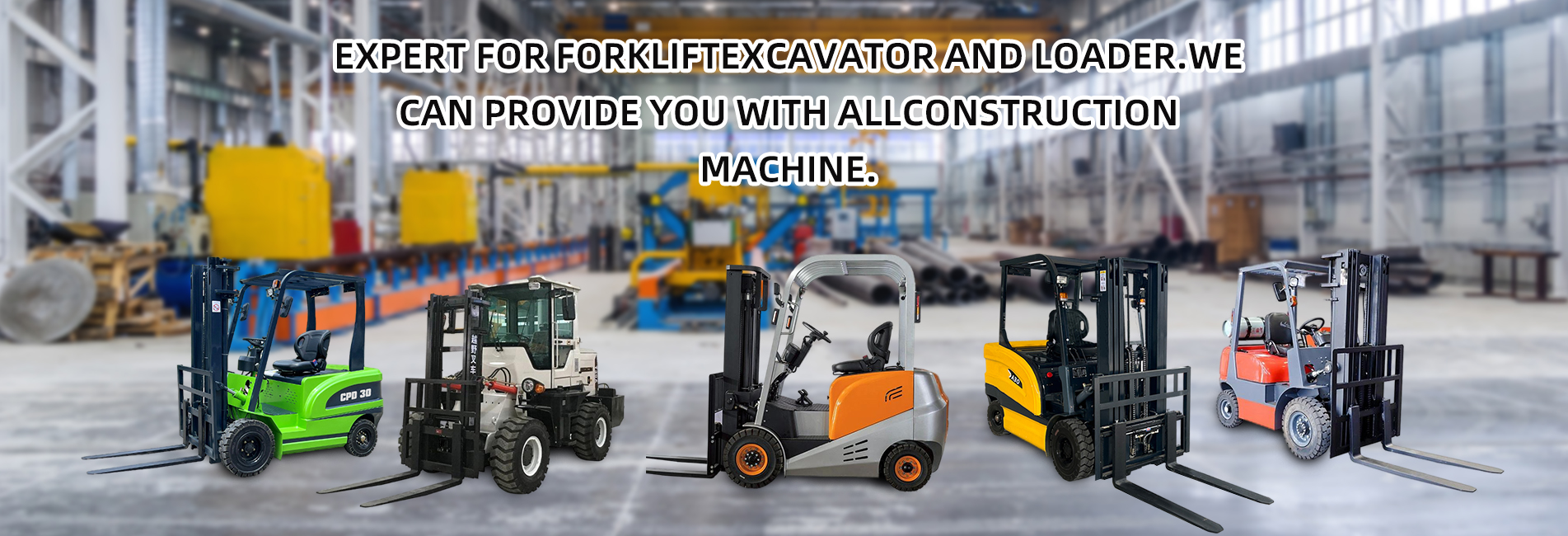Core Logic for Troubleshooting Electric Forklift Fault Codes
The core logic for addressing electric forklift fault codes is as follows: first, quickly locate the fault → resolve it through simple self-healing operations → conduct targeted basic troubleshooting → transfer complex faults to professional maintenance. Throughout the process, the principles of "time-saving, safety-first, and no fault escalation" must be adhered to. Below is a 4-step rapid troubleshooting process that can be directly implemented by operators and on-site maintenance personnel:

Step 1: Rapid Fault Localization in 3 Minutes (Critical Precondition)
Avoid blind troubleshooting; first clarify "where the fault is and whether it affects safety":- Read the code + check the manual: First, check the fault code on the forklift display (e.g., "E01", "B12"), then immediately refer to the equipment’s built-in Fault Code Manual (or search for the brand’s electronic manual on your mobile phone—official websites of Heli, Hangcha, Linde, etc., all provide downloads). The manual will clearly indicate the "fault type" (battery/motor/hydraulic/safety system) and "whether on-site handling is possible".
- Verify with actual symptoms: Combine the fault code with real-world performance to quickly narrow down the scope:
- Code with "B" (battery-related) + sudden drop in range / charging failure → Fault in the battery or charging system;
- Code with "M" (motor-related) + weak acceleration / abnormal noise → Fault in the motor or controller;
- Code with "H" (hydraulic-related) + jamming when lifting/lowering forks → Fault in the hydraulic system;
- Code with "S" (safety-related) + brake failure / continuous alarm → Fault in the safety system (highest priority).
Step 2: Simple Self-Healing Operations in 5 Minutes (Resolves 80% of Minor Faults)
For issues like "poor contact, false system triggers, or minor abnormalities", no disassembly is required—operators can resolve them independently:- Power-off restart and reset: Turn off the forklift’s main power → Remove the key → Wait 3–5 minutes (to fully power off and reset the controller and Battery Management System (BMS)) → Reconnect power and start the forklift.✅ Applicable scenarios: Fault code keeps reappearing, no obvious fault symptoms (e.g., false-triggered "E02 Communication Abnormality").
- Inspect key connectors (perform under power-off condition):
- Battery connector: Check for looseness or oxidation (unplug and reinsert firmly; wipe dust off the metal contacts);
- Motor/controller connector: Check for disconnection or squeezed wires (especially wires at the forklift’s turning joints);
- Sensor connectors (e.g., brake sensor, liquid level sensor): Check for looseness (e.g., a disconnected liquid level sensor connector in the hydraulic system may falsely trigger "E31 Insufficient Hydraulic Oil").
- Basic status check:
- Battery: Check if the remaining power is ≥20% (low power may trigger "B01 Low Voltage");
- Hydraulic oil/coolant: Check if the liquid level is between the scale marks (insufficient oil may trigger "H03 Low Liquid Level");
- Tires/brakes: Check if tire pressure is normal and if the brake pedal returns to its original position (stuck brakes may trigger "S05 Brake Abnormality").
Step 3: Targeted Basic Troubleshooting (Resolve Simple Faults On-Site)
If self-healing operations fail, conduct targeted troubleshooting based on the fault type—no professional tools are needed:| Fault Type (Code Prefix) | Common Code Examples | On-Site Rapid Troubleshooting Methods |
|---|
| Battery/Charging System (B) | B01 Low Voltage, B02 Charging Failure, B03 Battery Overheating | 1. replace with a compliant charger (do not mix brands/models);2. If the battery overheats, stop operation and cool it for 30 minutes (avoid exposure to direct sunlight); if the fault code persists after cooling, cell imbalance may be the cause—suspend use;3. If the charging port is oxidized, wipe it with a dry cloth and reinsert the connector. |
| Motor/Controller (M) | M01 Motor Overheating, M02 Phase Loss, M03 Controller Fault | 1. If the motor overheats, stop operation and let it cool for 20–30 minutes (common after heavy loads or climbing); avoid frequent rapid acceleration;2. For phase loss alarms, check if the motor’s three-phase connector is loose—reinsert firmly and restart;3. For controller faults (e.g., M03), do not disassemble—contact maintenance directly (the controller is a core component). |
| Hydraulic System (H) | H01 Pressure Abnormality, H02 Slow Lifting/Lowering, H03 Low Liquid Level | 1. If liquid level is low, add hydraulic oil of the corresponding model (do not use the wrong oil type);2. For jamming during lifting/lowering, repeatedly lift and lower the forks 3–5 times under no-load conditions to release air from the hydraulic system;3. For pressure abnormalities, if the fault code persists after refueling, the hydraulic pump may be faulty—stop operation. |
| Safety System (S) | S01 Brake Abnormality, S02 Parking Failure, S03 Excessive Tilt | 1. For brake abnormalities, check if the brake pedal returns to its original position; if stuck, reset it manually—if ineffective, prohibit operation;2. For excessive tilt alarms, the forklift may have falsely triggered the code on a slope—move it to flat ground and restart;3. For parking failure, secure the forklift with mechanical parking and contact maintenance (safety first). |
Step 4: Complex Faults → Immediate Shutdown + Professional Maintenance (Avoid Escalating Damage)
If any of the following situations occur, the fault involves core components (controller, sensor, BMS). Operators must not disassemble or repair independently—quickly transfer the fault to professionals:- The fault code reappears repeatedly after restarting/basic troubleshooting;
- The code is marked as a "severe fault" (e.g., Linde’s "E200 Controller Overload", Heli’s "E51 Motor Short Circuit");
- Accompanied by obvious abnormalities: smoke, burning smell, overheating components (hot to the touch), or complete brake/steering failure;
- Safety system alarms (e.g., "S04 Explosion-Proof System Fault", "S06 Operator Seatbelt Unfastened Lockout").
✅ Preparation before transfer: Record 3 key pieces of information to help maintenance personnel quickly diagnose the fault:- Fault code + occurrence scenario (e.g., "E08 triggered during heavy-load climbing", "B05 reported after 1 hour of charging");
- Troubleshooting operations already performed (e.g., "restarted 3 times, checked battery connector—no looseness");
- Forklift model, service life, and recent maintenance history (e.g., "Hangcha CPD30, purchased in 2023, charger replaced last week").
Key Reminders (Avoid Pitfalls)
- Safety first: For any fault code related to brakes, steering, or explosion-proof systems, shut down the forklift immediately—do not force operation;
- No blind disassembly: Core components (controller, BMS, sensors) have complex internal structures. Incorrect disassembly may cause short circuits and burnouts, doubling losses;
- Prepare manuals daily: Save the brand’s electronic fault manual on your mobile phone, or print pages of commonly used codes and paste them in the forklift cab for quick reference.



